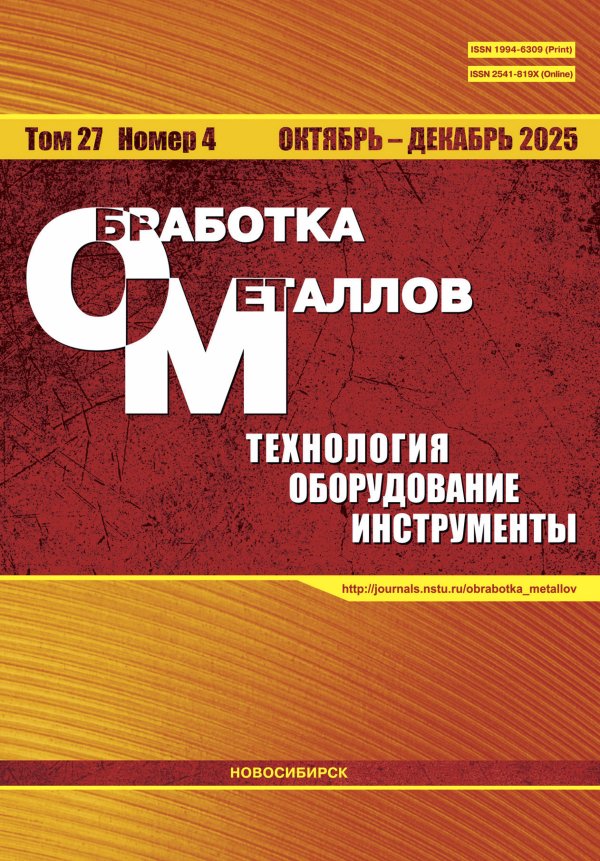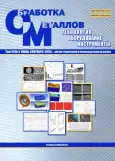Особенности структуры сварного шва при лазерной сварке конструкционной стали 09Г2С
- Авторы: Колубаев А.В.1, Сизова О.В.1, Колубаев Е.А.1, Заикина А.А.1, Воронцов А.В.1, Денисова Ю.А.1, Рубцов В.Е.1
-
Учреждения:
- Выпуск: Том 20, № 3 (2018)
- Страницы: 123-133
- Раздел: МАТЕРИАЛОВЕДЕНИЕ
- URL: https://journal-vniispk.ru/1994-6309/article/view/302084
- DOI: https://doi.org/10.17212/1994-6309-2018-20.3-123-133
- ID: 302084
Цитировать
Полный текст
Аннотация
Об авторах
А. В. Колубаев
Email: kav@ispms.ru
доктор физико-математических наук, профессор; Институт физики прочности и материаловедения СО РАН, пр. Академический, 2/4, г. Томск, 634055, Россия; kav@ispms.ru
О. В. Сизова
Email: ovs@ispms.ru
доктор технических наук, профессор; Институт физики прочности и материаловедения СО РАН, пр. Академический, 2/4, г. Томск, 634055, Россия; ovs@ispms.ru
Е. А. Колубаев
Email: eak@ispms.ru
доктор технических наук; Институт физики прочности и материаловедения СО РАН, пр. Академический, 2/4, г. Томск, 634055, Россия; eak@ispms.ru
А. А. Заикина
Email: aaz@ispms.ru
Институт физики прочности и материаловедения СО РАН, пр. Академический, 2/4, г. Томск, 634055, Россия; aaz@ispms.ru
А. В. Воронцов
Email: rvy@ispms.tsc.ru
Институт физики прочности и материаловедения СО РАН, пр. Академический, 2/4, г. Томск, 634055, Россия; rvy@ispms.tsc.ru
Ю. А. Денисова
Email: yukolubaeva@mail.ru
кандидат физико-математических наук; 1. Институт физики прочности и материаловедения СО РАН, пр. Академический, 2/4, г. Томск, 634055, Россия 2. Институт сильноточной электроники СО РАН, пр. Академический 2/3, г. Томск, 634055, Россия; yukolubaeva@mail.ru
В. Е. Рубцов
Email: rvy@ispms.ru
кандидат физико-математических наук; Институт физики прочности и материаловедения СО РАН, пр. Академический, 2/4, г. Томск, 634055, Россия; rvy@ispms.ru
Список литературы
- Sharma R.S., Molian P. Weldability of advanced high strength steels using an Yb:YAG disk laser // Journal of Materials Processing Technology. – 2011. – Vol. 211, iss. 11. – P. 1888–1897. – doi: 10.1016/j.jmatprotec.2011.06.009.
- Evolution of surface topography in one–dimensional laser machining of structural alumina / H.D. Vora, S. Santhanakrishnan, S.P. Harimkar, S.K.S. Boetcher, N.B. Dahotre // Journal of the European Ceramic Society. – 2012. – Vol. 32. – P. 4205–4218. – doi: 10.1016/j.jeurceramsoc.2012.06.015.
- Microstructure and mechanical properties of laser beam–welded AA2060 Al–Li alloy / X. Zhang, T. Huang, W. Yang, R. Xiao, Z. Liu, L. Li // Journal of Materials Processing Technology. – 2016. – Vol. 237. – P. 301–308. – doi: 10.1016/j.jmatprotec.2016.06.021.
- Influence of welding speed on microstructures and properties of ultra–high strength steel sheets in laser welding / Z. Gu, S. Yu, L. Han, X. Li, H. Xu // ISIJ International. – 2012. – Vol. 52, iss. 3. – P. 483–487. – doi: 10.2355/isijinternational.52.483.
- Structure of widmanstatten crystals of ferrite and cementite / I.A. Bataev, A.A. Bataev, V.G. Burov, Ya.S. Lizunkova, E.E. Zakharevich // Steel in Translation. – 2008. – Vol. 38, iss. 8. – P. 684–687. – doi: 10.3103/S0967091208080251.
- Farabi N., Chen D.L., Zhou Y. Fatigue properties of laser welded dual–phase steel joints // Procedia Engineering. – 2010. – Vol. 2. – P. 835–843. – doi: 10.1016/j.proeng.2010.03.090.
- Tensile and fatigue properties of fiber laser welded high strength low alloy and DP980 dual–phase steel joints / W. Xu, D. Westerbaan, S.S. Nayak, D.L. Chen, F. Goodwin, Y. Zhou // Materials & Design. – 2013. – Vol. 43. – P. 373–383. – doi: 10.1016/j.matdes.2012.07.017.
- Microstructure and mechanical properties of fiber laser welded QP980 steel / W. Guo, Z. Wan, P. Penga, Q. Jia, G. Zou, Y. Peng // Journal of Materials Processing Technology. – 2018. – Vol. 256. – P. 229–238. – doi: 10.1016/j.jmatprotec.2018.02.015.
- Pores formation in laser–MAG welding of 42CrMo steel / Y. Zhang, G. Chen, C. Zhou, Y. Jiang, P. Zhong, S. Li // Journal of Materials Processing Technology. – 2017. – Vol. 245. – P. 309–317. – doi: 10.1016/j.jmatprotec.2017.02.029.
- The elimination of pores in laser welds of AISI 304 plate using different shielding gases / J. Sun, P. Nie, K. Fenga, Z. Li, B. Guo, E. Jiang // Journal of Materials Processing Technology. – 2017. – Vol. 248. – P. 56–63. – doi: 10.1016/j.jmatprotec.2017.05.011.
- Liquation cracking in fiber laser welded joints of inconel 617 / W. Ren, F. Lu, R. Yang, X. Liu, Z. Li // Journal of Materials Processing Technology. – 2015. – Vol. 226. – P. 214–220. – doi: 10.1016/j.jmatprotec.2015.07.004.
- Seto N., Katayama S., Matsunawa A. High-speed simultaneous observation of plasma and keyhole behavior during high power CO2 laser welding: effect of shielding gas on porosity formation // Journal of Laser Applications. – 2000. – Vol. 12 (6). – P. 245–250. – doi: 10.2351/1.1324717.
- Tsukamoto S. High speed imaging technique. Part 2 – High speed imaging of power beam welding phenomena // Science and Technology of Welding and Joining. – 2011. – Vol. 16, iss. 1. – P. 44–55. – doi: 10.1179/136217110X12785889549949.
- Formation and influence mechanism of keyhole-induced porosity in deep-penetration laser welding based on 3D transient modeling / F. Lu , X. Li , Z. Li , X. Tang, H. Cui // International Journal of Heat and Mass Transfer. – 2015. – Vol. 90. – P. 1143–1152. – doi: 10.1016/j.ijheatmasstransfer.2015.07.041.
- Modeling of keyhole dynamics and porosity formation considering the adaptive keyhole shape and three-phase coupling during deep-penetration laser welding / H. Zhao, W. Niu, B. Zhang, Y. Lei, M. Kodama, T. Ishide // Journal of Physics D: Applied Physics. – 2011. – Vol. 44. – P. 485302/1–485302/13. – doi: 10.1088/0022–3727/44/48/485302.
- Смирнова Н.А., Мисюров А.И. Особенности образования структуры при лазерной обработке // Вестник МГТУ им. Н.Э. Баумана. Серия: Машиностроение. – 2012. – № 6. – С. 115–129. – doi: 10.18698/2308–6033–2012–6–233.
- Игнатов А.Г. Лазерная сварка сталей мощными СО2 лазерами. Ч. 3 // Фотоника. – 2009. – № 4. – С. 12–16.
- Структура стальных швов, формируемых с использованием источников энергии высокой концентрации / В.Г. Буров, А.П. Алхимов, И.А. Батаев, Е.Д. Головин, Е.Е. Корниенко // Доклады АН ВШ РФ. – 2012. – № 1 (8). – С. 52–60.
Дополнительные файлы







